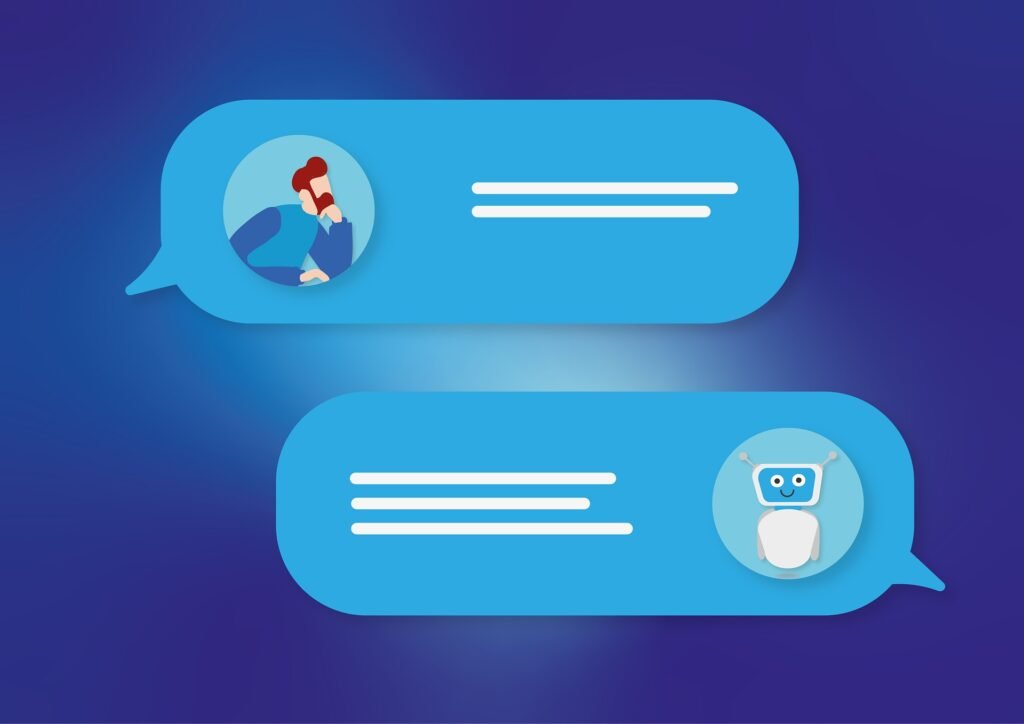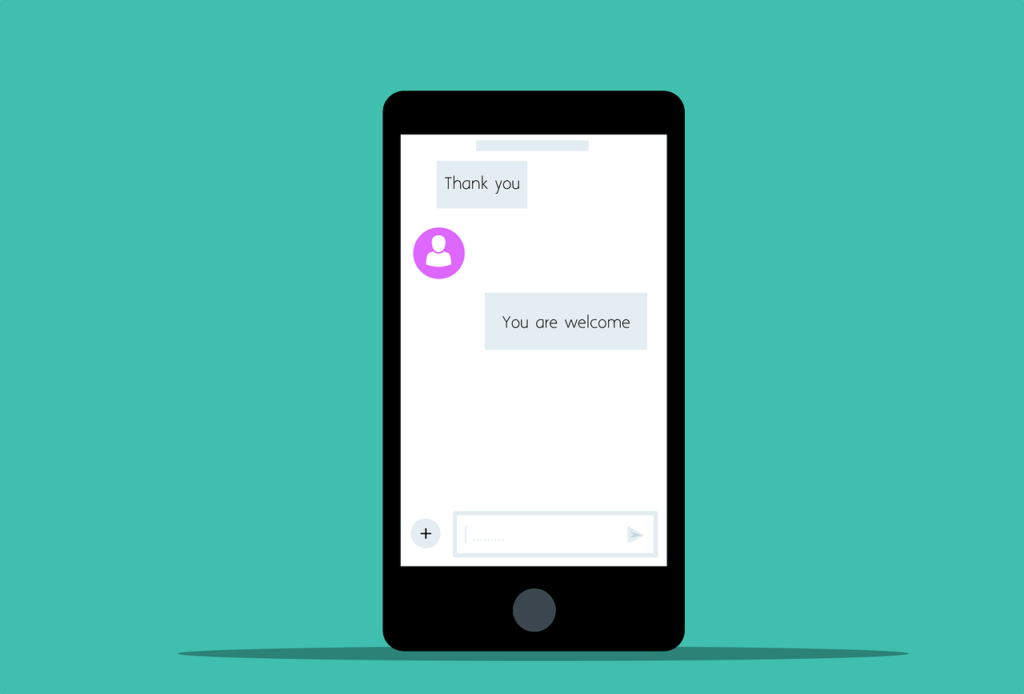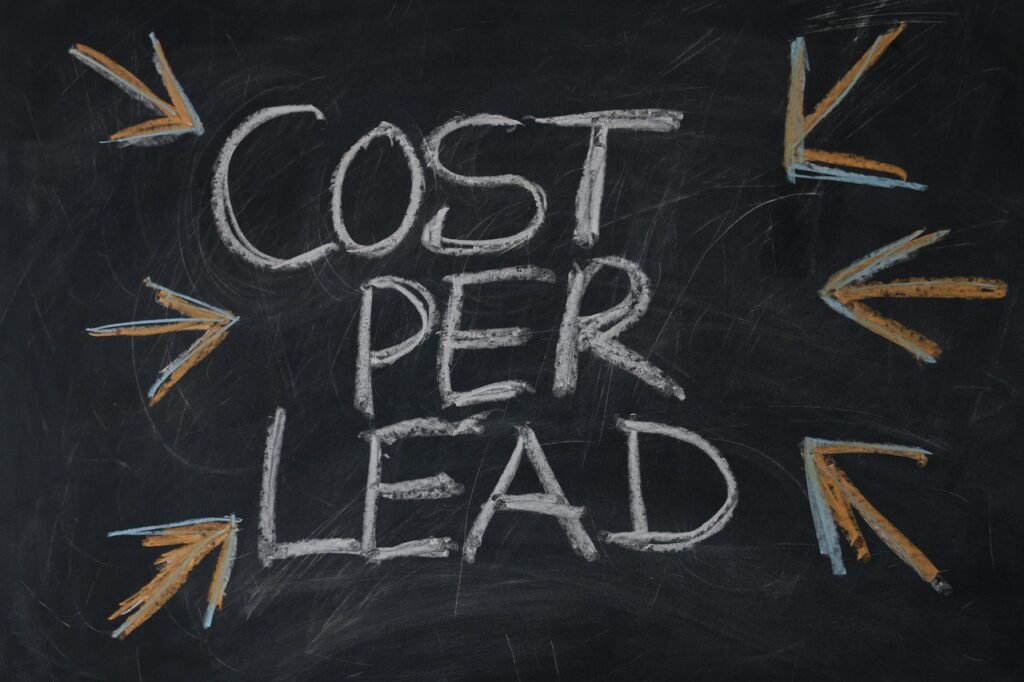- 1. Why Is Text Marketing More Effective Than Email Marketing?
- 2. How Quickly Are Text Messages Read?
- 3. What Is the Response Rate for Text Marketing?
- 4. Are Consumers Willing to Receive SMS Messages from Brands?
- 5. How Does SMS Marketing Compare to Other Channels in Terms of Response Rates?
- 6. How Quickly Do Consumers Read Text Messages?
- 7. How Many Consumers Open Every Text Message They Receive?
- 8. Do Consumers Find SMS a Good Way for Businesses to Get Their Attention?
- 9. Should Businesses Use SMS More Often to Communicate with Customers?
- 10. How Effective Are SMS Messages in Driving Purchases?
- 11. How Does SMS Marketing Improve Customer Engagement Rates?
- 12. How Likely Are Consumers to Engage with Personalized Text Messages?
- 13. How Prevalent Is SMS Use Among Professionals for Business Purposes?
- 14. Why Are Text Messages Preferred Over Emails for Urgent Communications?
- 15. How Do Leads Prefer to Be Contacted?
- 16. What Is the Conversion Rate for SMS Campaigns?
- 17. How Do SMS Messages Influence Purchasing Decisions?
- 18. What Is the Click-Through Rate for SMS Marketing?
- 19. Why Do Consumers Opt Into Brand’s Text Messages?
- 20. Are Marketers Increasing Their SMS Marketing Budgets in 2024?
- 21. How Cost-Effective Is SMS Marketing Compared to Other Channels?
- 22. How Do Consumers Prefer to Receive Product Updates and Special Offers?
- 23. What Is the Deliverability Rate of SMS Marketing?
- 24. How Do Consumers Respond to SMS Surveys?
- 25. How Do Consumers View Businesses That Communicate via SMS?
- 26. Are Consumers Willing to Opt-In to Receive SMS from Brands?
- 27. How Mobile-Friendly Is SMS Marketing?
- 28. How Do Consumers Use SMS to Engage with Customer Service?
- 29. How Will Businesses Integrate SMS Marketing with Social Media Efforts by 2024?
- 30. How Do Consumers Feel About Receiving Reminders via SMS?
- Conclusion
- We got all the latest Marketing Stats here:
Text marketing has become one of the most effective ways to reach and engage customers. With the high open rates and immediate nature of text messages, businesses can communicate directly with their audience in a personal and impactful way. As we move into 2024, understanding the key statistics around text marketing can help you optimize your strategy and achieve better results. In this article, we’ll explore essential statistics that highlight the power of text marketing and provide actionable insights to help you leverage this channel effectively.
1. Why Is Text Marketing More Effective Than Email Marketing?

98% of text messages are opened, compared to 20% of emails. This statistic highlights the significant advantage of text marketing over email marketing in terms of open rates. Text messages are almost always opened and read, making them a powerful tool for immediate communication.
The Immediate Impact of Text Marketing
The high open rate of text messages means that your marketing messages are almost guaranteed to be seen by your audience. This immediacy can be crucial for time-sensitive offers, updates, or alerts. To make the most of this, ensure your text messages are clear, concise, and provide immediate value to the recipient.
2. How Quickly Are Text Messages Read?
95% of text messages are read within three minutes of being sent. This statistic underscores the rapid response time that text marketing can achieve. When you send a text message, you can be confident that it will be read almost immediately.
Leveraging Quick Read Times
The quick read times of text messages make them ideal for urgent updates or limited-time offers. Use this to your advantage by sending timely messages that encourage immediate action, such as flash sales, appointment reminders, or important notifications.
3. What Is the Response Rate for Text Marketing?
Text messages have a 45% response rate, compared to 6% for email. The significantly higher response rate for text messages indicates that recipients are more likely to engage with your messages when communicated via SMS.
Driving Engagement with Text Marketing
To drive engagement, personalize your text messages and include a clear call-to-action. Whether you’re asking customers to reply to a survey, visit your website, or use a discount code, make it easy for them to respond and take the desired action.
4. Are Consumers Willing to Receive SMS Messages from Brands?
75% of consumers are okay with receiving SMS messages from brands after they opt-in. This statistic shows that a large majority of consumers are open to receiving text messages from businesses they are interested in, provided they have given their consent.
Building a Quality SMS List
To build a quality SMS list, ensure that you obtain clear opt-in consent from your customers. Offer incentives such as exclusive discounts, early access to sales, or special updates to encourage sign-ups. Respect your customers’ preferences and provide an easy way for them to opt-out if they choose to do so.
5. How Does SMS Marketing Compare to Other Channels in Terms of Response Rates?
SMS marketing has a 209% higher response rate than phone calls, emails, or Facebook. This statistic highlights the effectiveness of SMS marketing in eliciting responses from customers compared to other channels.
Maximizing Response Rates
To maximize response rates, keep your text messages short and to the point. Use direct language and create a sense of urgency to encourage immediate action. Personalized messages that address the recipient by name and tailor the content to their interests can also improve response rates.
6. How Quickly Do Consumers Read Text Messages?
60% of consumers read a text message within 1-5 minutes of receiving it. This rapid read time means that text marketing can be highly effective for urgent communications and timely updates.
Timing Your Messages for Maximum Impact
To ensure your messages are read promptly, consider the timing of your text messages. Avoid sending texts too early in the morning or late at night. Instead, aim for times when your audience is likely to be free and attentive, such as during lunch breaks or early evenings.
7. How Many Consumers Open Every Text Message They Receive?
82% of consumers say they open every text message they receive. This high open rate confirms that text marketing is an effective way to ensure your messages are seen by your audience.
Crafting Compelling Messages
To take advantage of this high open rate, make sure your messages are engaging and relevant. Use clear and compelling language to capture attention and provide value in every message you send. Whether it’s an exclusive offer, important update, or useful tip, make sure your text messages resonate with your audience.
8. Do Consumers Find SMS a Good Way for Businesses to Get Their Attention?
70% of consumers say that SMS is a good way for businesses to get their attention. This statistic shows that many consumers view text messages as an effective channel for receiving information from businesses.
Utilizing SMS for Attention-Grabbing Marketing
To use SMS effectively, send messages that are concise and attention-grabbing. Highlight key benefits or important information right away. Use engaging language and create a sense of urgency to encourage immediate action. Ensure your messages are relevant and valuable to your audience to maintain their interest and trust.
9. Should Businesses Use SMS More Often to Communicate with Customers?
64% of consumers think businesses should use SMS more often to communicate with them. This statistic suggests that there is a growing demand for SMS communication from businesses.
Increasing SMS Communication
To meet this demand, consider incorporating SMS into your regular communication strategy. Use text messages to share updates, promotions, and reminders. Ensure that your messages are timely and relevant to avoid overwhelming your audience. Regularly review your SMS strategy to ensure it aligns with your overall marketing goals and provides value to your customers.
10. How Effective Are SMS Messages in Driving Purchases?

50% of consumers make direct purchases after receiving an SMS-branded text, coupon, or QR code. This statistic highlights the direct impact that SMS marketing can have on driving sales.
Encouraging Purchases Through SMS
To drive purchases through SMS, send exclusive offers, discount codes, and limited-time promotions. Make it easy for recipients to take action by including clear instructions and direct links to your website or online store. Personalize your messages to make them more relevant to each recipient’s interests and preferences.
11. How Does SMS Marketing Improve Customer Engagement Rates?
SMS marketing can improve customer engagement rates by 30%. This significant increase in engagement highlights the power of text messaging as a direct and personal communication channel.
Boosting Engagement Through SMS
To boost engagement, ensure your SMS messages are interactive and engaging. Ask questions, encourage responses, and provide links to more content. Use SMS to create a two-way dialogue with your customers, making them feel valued and heard. Regularly update your messaging strategy based on customer feedback and engagement metrics.
12. How Likely Are Consumers to Engage with Personalized Text Messages?
45% of consumers say they are likely to engage with a brand over SMS if they receive personalized texts. Personalization is key to increasing engagement and making your messages more relevant and appealing.
Personalizing Your SMS Campaigns
To personalize your SMS campaigns, use data such as past purchase history, browsing behavior, and demographic information to tailor your messages. Address recipients by their names and customize the content to their interests and preferences. Personalized messages can make customers feel special and increase their likelihood of engaging with your brand.
13. How Prevalent Is SMS Use Among Professionals for Business Purposes?
80% of professionals use SMS messages for business purposes. This widespread use indicates that SMS is not only effective for consumer marketing but also for professional and B2B communication.
Utilizing SMS for Business Communication
To utilize SMS for business communication, consider using text messages for appointment reminders, project updates, and quick decision-making processes. Ensure that your messages are professional, clear, and to the point. Use SMS to maintain efficient and timely communication with colleagues, clients, and partners.
14. Why Are Text Messages Preferred Over Emails for Urgent Communications?
76% of respondents say they are more likely to read a message sooner if it’s an SMS than if it’s an email. This preference for SMS over email for urgent communications makes text messaging a powerful tool for time-sensitive information.
Prioritizing Urgent Communications with SMS
To prioritize urgent communications, use SMS to send critical updates, emergency alerts, and important reminders. Ensure that your messages are clear and concise, and include a call-to-action if necessary. The immediacy of SMS ensures that your urgent messages are received and acted upon quickly.
15. How Do Leads Prefer to Be Contacted?
90% of leads prefer to be texted rather than called. This preference for SMS over phone calls highlights the convenience and non-intrusive nature of text messaging.
Engaging Leads Through SMS
To engage leads through SMS, use text messages for initial outreach, follow-ups, and nurturing. Keep your messages short and focused, providing valuable information or offers that encourage leads to take the next step. Respect leads’ preferences and provide options for them to easily opt-out if they choose.

Related: Check out our free tools:

16. What Is the Conversion Rate for SMS Campaigns?
SMS campaigns have a conversion rate of 29%. This high conversion rate demonstrates the effectiveness of SMS marketing in driving actions and achieving marketing goals.
Maximizing Conversions with SMS
To maximize conversions, create compelling and actionable SMS messages. Use strong calls-to-action and provide clear instructions for recipients to follow. Track and analyze your SMS campaign performance to identify what works best and optimize your strategy accordingly.
17. How Do SMS Messages Influence Purchasing Decisions?
58% of consumers say that SMS messages from businesses influence their purchasing decisions. This influence underscores the importance of using SMS marketing to guide customers through their buying journey.
Influencing Purchases Through SMS
To influence purchasing decisions, send targeted messages that highlight product benefits, special offers, and customer testimonials. Provide exclusive discounts and time-sensitive promotions to encourage immediate purchases. Use SMS to build excitement and anticipation around new product launches or sales events.
18. What Is the Click-Through Rate for SMS Marketing?
The average click-through rate (CTR) for SMS marketing is 19%, compared to just 4.2% for email. This high CTR indicates that SMS messages are highly effective in driving traffic and engagement.
Driving Click-Throughs with SMS
To drive click-throughs, include clear and compelling links in your SMS messages. Use shortened URLs to save space and make your messages more readable.
Provide a strong incentive for recipients to click, such as exclusive content, special offers, or useful resources. Track your CTR to measure the effectiveness of your campaigns and make data-driven improvements.
19. Why Do Consumers Opt Into Brand’s Text Messages?
77% of consumers say they opted into a brand’s text messages to receive coupons or deals. This statistic highlights the importance of offering valuable incentives to encourage opt-ins.
Encouraging Opt-Ins with Valuable Offers
To encourage opt-ins, promote your SMS program by highlighting the exclusive benefits recipients will receive, such as special discounts, early access to sales, or VIP content.
Make it easy for customers to sign up through various channels, including your website, social media, and in-store promotions. Ensure that the value of opting in is clear and compelling.
20. Are Marketers Increasing Their SMS Marketing Budgets in 2024?

60% of marketers plan to increase their SMS marketing budgets in 2024. This planned increase reflects the growing recognition of SMS marketing’s effectiveness and ROI.
Allocating Budget for SMS Marketing
To allocate your SMS marketing budget effectively, invest in a robust SMS platform that offers features like automation, segmentation, and analytics. Prioritize spending on creating high-quality content and personalized messages. Monitor your campaign performance regularly and adjust your budget based on the results to maximize ROI.
21. How Cost-Effective Is SMS Marketing Compared to Other Channels?
SMS marketing costs are typically 62% less than other marketing channels. This cost-effectiveness makes SMS marketing an attractive option for businesses looking to maximize their marketing budget.
Making the Most of SMS Marketing’s Cost-Effectiveness
To leverage the cost-effectiveness of SMS marketing, integrate it into your overall marketing strategy. Use SMS for direct communication, promotions, and customer support. By balancing SMS with other marketing channels, you can achieve broad reach and high engagement without overspending.
22. How Do Consumers Prefer to Receive Product Updates and Special Offers?
44% of consumers prefer to receive product updates and special offers via SMS. This preference highlights the importance of using text messages for promotional communications.
Sending Effective Product Updates and Offers
To send effective product updates and special offers, ensure your messages are clear and concise. Highlight the key benefits and provide a strong call-to-action. Personalize your messages to make them more relevant to each recipient. Use SMS to deliver timely and exclusive offers that encourage immediate action.
23. What Is the Deliverability Rate of SMS Marketing?
Businesses experience a 98% deliverability rate with SMS marketing. This high deliverability rate ensures that your messages reach their intended audience.
Ensuring High Deliverability Rates
To maintain high deliverability rates, use a reliable SMS platform and adhere to best practices for SMS marketing. Avoid sending messages too frequently and ensure your content is relevant and valuable to recipients. Regularly update and clean your contact lists to remove inactive or incorrect numbers.
24. How Do Consumers Respond to SMS Surveys?
31% of consumers respond to surveys sent via SMS. This response rate indicates that SMS is an effective channel for gathering customer feedback and insights.
Conducting Effective SMS Surveys
To conduct effective SMS surveys, keep your questions short and simple. Use multiple-choice or yes/no questions to make it easy for recipients to respond. Offer incentives, such as discounts or rewards, to encourage participation. Analyze the survey responses to gain valuable insights into customer preferences and satisfaction.
25. How Do Consumers View Businesses That Communicate via SMS?
74% of consumers report an improved overall impression of businesses that communicate with them via SMS. This positive perception can enhance customer loyalty and brand image.
Building a Positive Brand Image Through SMS
To build a positive brand image, use SMS to provide excellent customer service, timely updates, and valuable offers. Ensure your messages are respectful and considerate of recipients’ preferences.
Respond promptly to customer inquiries and feedback received via SMS. By maintaining open and helpful communication, you can strengthen your relationship with customers and enhance your brand reputation.
26. Are Consumers Willing to Opt-In to Receive SMS from Brands?

56% of consumers say they would consider opting in to receive SMS from their favorite brands. This willingness indicates a significant opportunity for businesses to expand their SMS subscriber base.
Encouraging Opt-Ins Through Clear Value Propositions
To encourage opt-ins, clearly communicate the benefits of subscribing to your SMS list. Highlight exclusive offers, timely updates, and personalized content that subscribers will receive.
Make the opt-in process simple and convenient through multiple channels, such as online forms, in-store sign-ups, and social media promotions. Ensure that the value proposition is compelling and relevant to your target audience.
27. How Mobile-Friendly Is SMS Marketing?
89% of people use their smartphones to read text messages, making SMS a mobile-friendly marketing strategy. The widespread use of smartphones ensures that your SMS messages are easily accessible to your audience.
Optimizing SMS for Mobile Users
To optimize SMS for mobile users, ensure that your messages are concise and formatted for easy reading on small screens. Use short URLs and clear calls-to-action that are easy to tap. Personalize your messages to make them more engaging and relevant. Regularly test your messages on different mobile devices to ensure a consistent and user-friendly experience.
28. How Do Consumers Use SMS to Engage with Customer Service?
41% of consumers use SMS to engage with customer service. This statistic highlights the convenience and effectiveness of SMS for customer support interactions.
Enhancing Customer Service with SMS
To enhance customer service through SMS, provide a dedicated number for SMS inquiries and ensure timely responses. Use automated responses to acknowledge receipt of messages and set expectations for response times.
Train your customer service team to handle SMS inquiries efficiently and professionally. Use SMS to provide updates on order status, appointment reminders, and resolutions to customer issues.
29. How Will Businesses Integrate SMS Marketing with Social Media Efforts by 2024?
66% of businesses are expected to integrate SMS marketing with their social media efforts by 2024. This integration can enhance the effectiveness of both channels and create a cohesive marketing strategy.
Integrating SMS with Social Media
To integrate SMS with social media, use SMS to promote your social media profiles and encourage followers to engage with your content. Include SMS opt-in prompts in your social media posts and ads to grow your SMS subscriber list.
Use social media to share updates and promotions that drive traffic to your SMS campaigns. By aligning your messaging and promotions across both channels, you can create a more unified and impactful marketing strategy.
30. How Do Consumers Feel About Receiving Reminders via SMS?
57% of consumers said they would like to receive reminders via SMS. This preference indicates that SMS is an effective channel for sending important reminders and notifications.
Sending Effective SMS Reminders
To send effective SMS reminders, keep your messages short and to the point. Include all necessary details, such as dates, times, and any required actions. Personalize your reminders to make them more relevant to each recipient.
Send reminders at appropriate times to ensure they are seen and acted upon promptly. By providing helpful and timely reminders, you can improve customer satisfaction and reduce missed appointments or deadlines.
Conclusion
Text marketing continues to be a powerful and effective channel for reaching and engaging customers. By leveraging the key statistics and trends outlined in this article, you can optimize your SMS marketing strategy and achieve better results in 2024. Focus on personalization, timely communication, and providing value to your audience to maximize the impact of your text marketing efforts. As you implement these strategies, you’ll build stronger customer relationships and drive greater success for your business.
We got all the latest Marketing Stats here:
READ NEXT:
- SaaS Content Clusters: Creating Comprehensive Resources
- How CRM can Skyrocket your Customer Retention! (and Boost LTV)
- Understanding SEO for Educational Institutions: A Beginner’s Guide
- How to Create a Digital Marketing Plan: The Complete Guide
- How to Set Up Conversion Tracking for Booking Engines





















Comments are closed.